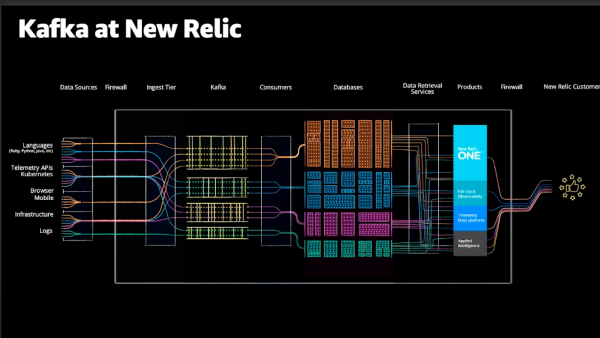When monitoring and troubleshooting modern applications, having a complete view of requests across your entire system has become more critical than ever before. This is where distributed tracing comes in. With distributed tracing, which is included with New Relic application performance monitoring (APM), you can quickly understand complex problems, identify bottlenecks, and resolve issues without additional configuration. But what about finding the right trace faster?
You can now view distributed traces directly in your logs and in errors inbox, making it both quicker and easier to find the traces you need. New Relic presents related distributed traces in the occurrences tab of errors inbox, in the error group in the APM errors page, and in the log details panel, allowing you to view your traces where you’re working.
New Relic traces in context also detect whether or not a trace has been sampled. When a trace isn’t available, you'll have links to relevant documentation so you can improve and adjust your distributed trace sampling or instrumentation. You’ll spend more time resolving issues with data, rather than searching for a trace that doesn’t exist.
With a streamlined way to access related distributed traces across logs and errors, you can improve the way you monitor and troubleshoot your applications.
Get started with distributed tracing in errors inbox, APM errors, and logs
1. Review the distributed tracing documentation.
2. Use our guided install to send logs and errors data to New Relic.
3. Deploy or update to the latest APM agent. Distributed tracing will be immediately available after you install the latest agents.
4. Add agents for each service involved in the call path you’re interested in, such as browser, and mobile agents.
5. To view traces in your errors inbox:
- Select an error group.
- In the Occurrences tab, select Only show errors with distributed traces.
- From there, you’ll see the distributed trace detail below the Stack trace section, as shown in this screenshot example.
6. To view traces in APM errors:
Select an error group. You’ll see the correlated distributed trace below the stack trace section when a distributed trace has been sampled for that error, as shown in this example.
7. To view traces in logs:
Select an individual log to view the log detail. You'll see the correlated distributed trace below the host section when a distributed trace has been sampled for that log, as shown in this example.
Next steps
Ready to get started? Distributed tracing is included with New Relic APM at no additional cost, so you can better understand dependencies across your system, troubleshoot faster, and improve app performance.
If you’re already using New Relic, review distributed tracing documentation and get started with distributed tracing in errors inbox, APM errors, and logs.
Don't have a New Relic account yet? Sign up for free. Your account includes 100 GB/month of free data ingest, one free full-access user, and unlimited free basic users.
The views expressed on this blog are those of the author and do not necessarily reflect the views of New Relic. Any solutions offered by the author are environment-specific and not part of the commercial solutions or support offered by New Relic. Please join us exclusively at the Explorers Hub (discuss.newrelic.com) for questions and support related to this blog post. This blog may contain links to content on third-party sites. By providing such links, New Relic does not adopt, guarantee, approve or endorse the information, views or products available on such sites.



